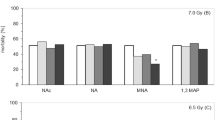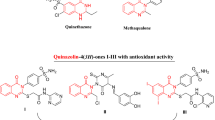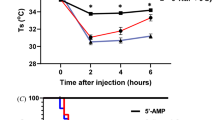Abstract
CERTAIN amine oxides exert a protective effect against radiation injury1,2. Reserpine has also been shown to have this action3. This suggested a comparison between reserpine and its N-oxide. Groups of 20 CF–1 mice were administered various doses of the two compounds 24 hr. before X-irradiation with 600 r. (Table 1). Radiation conditions were the same as described previously1. Both compounds produced typical reserpine effects, sedation and ptosis, but the N-oxide was less active per dose. All three doses of reserpine N-oxide significantly increased the ST50 day, whereas only one dose of reserpine had this effect (Table 1). On the basis of total survival it requires twice as much reserpine as its N-oxide to decrease mortality by 25 per cent, and neither compound is as effective as quinoxaline di-N-oxide1 or anhydroerythromycin N-oxide2. Mechanisms of action are probably different, since the reserpine compounds exert no antibiotic effects. However, they have the proper chemical structures postulated for removing oxidizing radicals2. Protection might be partially the result of the release of known protective compounds, adrenaline and 5-hydroxytryptamine5. The release of catecholamines and 5-hydroxytryptamine is essentially complete 16 hr. after reserpine administration, and the binding sites, as well as the plasma content, do not begin to contain appreciable amounts of these amines for at least 4 days6–9. Metabolism and excretion are also going on at this time, and in all probability the amount of such amines available for exerting a protective effect is below that necessary for such an action. On the other hand, reserpine has been found in body tissues for at least 48 hr. following a single dose10. Most of the reserpine was found in the tissue cells where, in the present radiation experiment, it could act as a protecting compound. The fact that reserpine and its N-oxide exert only a slight protective effect against lethal X-irradiation points out the need for continuing the search for compounds having low toxicity and greater protective effects at the cellular level.
This is a preview of subscription content, access via your institution
Access options
Subscribe to this journal
Receive 51 print issues and online access
$199.00 per year
only $3.90 per issue
Buy this article
- Purchase on Springer Link
- Instant access to full article PDF
Prices may be subject to local taxes which are calculated during checkout
Similar content being viewed by others
References
Haley, T. J., Flesher, A. M., Veomett, R., and Vincent, J., Proc. Soc. Exp. Biol. Med. N.Y., 96, 579 (1957).
Haley, T. J., Flesher, A. M., and Komesu, N., Nature, 184, 198 (1959).
Melching, H. J., and Langendorff, M., Naturwiss., 44, 377 (1957).
Litchfield, jun., J. T., J. Pharmacol., 97, 399 (1949).
Pihl, A., and Eldjarn, L., Pharmacol. Rev., 10, 437 (1958).
Shore, P. A., Pletscher, A., Tomich, E. G., Carlsson, A., Kuntsman, R., and Brodie, B. B., Ann. N.Y. Acad. Sci., 66, 609 (1957).
Brodie, B. B., Olin, J. S., Kuntsman, R. G., and Shore, P. A., Science, 125, 1293 (1957).
Holzbauer, M., and Vogt, M., J. Neurochem., 1, 8 (1957).
Paasonen, M. K., and Krayer, O., J. Pharmacol., 123, 153 (1958).
Sheppard, H., Tsien, W. H., Plummer, A. J., Peets, E. A., Giletti, B. J., and Schulert, A. R., Proc. Soc. Exp. Biol. Med. N.Y., 97, 717 (1958).
Author information
Authors and Affiliations
Rights and permissions
About this article
Cite this article
HALEY, T., FLESHER, A. & MAVIS, L. Radioprotective Effects of Reserpine and its N-oxide. Nature 192, 1309–1310 (1961). https://doi.org/10.1038/1921309b0
Issue Date:
DOI: https://doi.org/10.1038/1921309b0
This article is cited by
-
Complex Amine Oxides with Radioprotectant Properties
Nature (1962)
-
Librium als Strahlenschutzsubstanz für Mäuse
Experientia (1962)
Comments
By submitting a comment you agree to abide by our Terms and Community Guidelines. If you find something abusive or that does not comply with our terms or guidelines please flag it as inappropriate.



